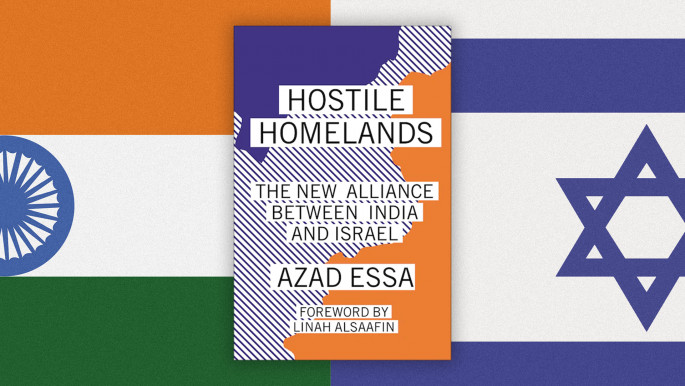
by Shaimin Raja 6 September 2023
In a world where religious fervor continues to pulse strongly outside the confines of Western Europe, the vitality of faith has taken on diverse and often radical forms. Beyond geographical boundaries, these fervent religious movements, characterized by extreme devotion and nationalistic undertones, have proliferated across various religious denominations. This fervor, regardless of the hue of the skin or the name by which the divine is invoked, seems to have evolved into a manifestation of extreme religious nationalism.
While the global spotlight has been fixated on monumental events such as the 9/11 attacks, the subsequent “war on terror,” and the rise of radical Islam, a parallel shift has been quietly gaining momentum in different corners of the world. This transformation has given rise to what can be aptly termed as radical Hinduism, or Hindutva, as well as radical Judaism, commonly referred to as religious Zionism. What’s intriguing is how these religious doctrines, once perceived as sacrosanct and non-political, have woven themselves into the very fabric of contemporary political landscapes. In his recent book, writer and journalist Azad Essa embarks on a timely exploration of these two religious-political phenomena, delving into how they have converged and forged an intricate bond between two nations: India and Israel. This symbiotic relationship, as Essa posits, isn’t merely rooted in shared national interests but is significantly nurtured by their religious and ideological commonalities.
Essa’s primary thesis, however, might evoke skepticism among some readers, myself included. Nonetheless, the book offers a succinct yet illuminating overview of the current political climates in India and Israel, deftly illuminated by their historical underpinnings. Spanning 173 pages of core content, it presents an accessible read that could be comfortably digested over the course of a long weekend. The intriguing parallels between these two nations, both in terms of history and evolution, come into sharp focus. India and Israel emerged as modern nation-states within a mere year of each other, a factor that inadvertently shapes their shared narratives. The initial decades following their inception saw a dominance of singular political parties with robust socialist leanings. As the Cold War landscape unfolded, India leaned towards the Soviet sphere, while Israel increasingly gravitated towards becoming a client state of the United States, particularly after the landmark Six-Day War in 1967. This relationship, however, takes on a more nuanced complexion as the protégé seemingly gains influence over the patron state. Essa dedicates an entire chapter to the influential Jewish lobby in the United States, revealing how India’s evolving lobby mirrors the strategies of its pro-Israeli counterpart, often yielding comparable outcomes.
Both countries have sculpted their national identities by defining themselves in opposition to a designated “Other.” This antagonism has manifested as the suppression of Palestinians in Occupied Territories and Muslims within Kashmir. Ethno-nationalism, as a unifying identity construct, often necessitates the negation of the identities of those who stand in contrast.
Strikingly, the era characterized by socialist inclinations in both India (the Congress party) and Israel (the Labor Party) created an ideological distance between the two nations. This paradigm shifted with the ascent of the hard-right Likud bloc in Israel during the late 1970s. A parallel emergence of Hindutva, championed by figures like Narendra Modi and his Bharatiya Janata Party (BJP), catalyzed their gradual convergence. Presently, Modi and Benjamin Netanyahu share remarkable similarities in political ideologies. Both leaders adopt a resolute foreign policy stance and enforce stringent measures against occupied territories, garnering unwavering support from domestic religious hardliners. Furthermore, both tactfully navigate their ties with Washington. While the Jewish lobby significantly influences Israel’s influence, the shared antagonism towards Iran serves as a cornerstone for both nations’ rapport with the United States.
The unsettling parallels extend to the realm of human rights abuses, drawing eerie resemblances between the experiences of Xinjiang, Palestine, and Kashmir. Notably, geopolitical dynamics propel global attention toward Xinjiang, overshadowing the distressing parallels between Kashmir and Palestine. The international community’s response to these conflicts remains disparate, often reflecting geopolitical alliances.
In conclusion, Azad Essa’s exploration into the symbiotic relationship between radical Hinduism and radical Judaism within the contexts of India and Israel offers a thought-provoking narrative. While some may question the primary thesis, the book serves as a valuable resource for understanding the complex interplay between religious ideologies and their entwined impact on contemporary politics. The parallels drawn between these two nations underscore the profound influence of religious-nationalistic fervor on geopolitical landscapes. The evolving dynamics between India and Israel necessitate a nuanced examination that delves beyond the surface narrative, prompting us to reevaluate the interplay between faith, politics, and identity on the global stage.
